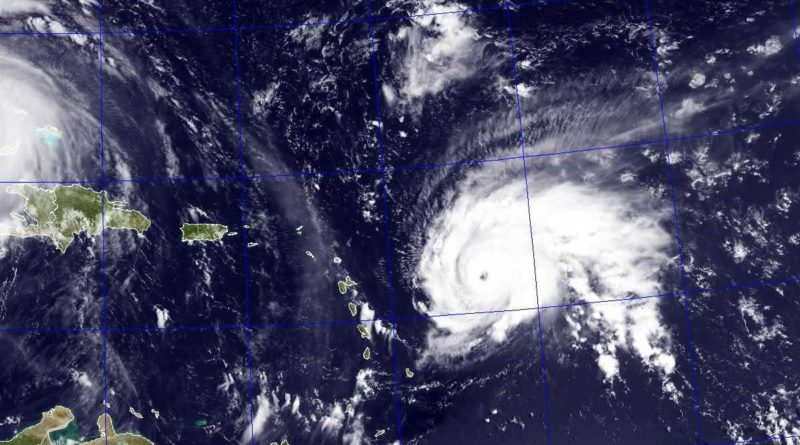Harvey and Irma Break Records; Maria Follows in Wake
Hurricane season is here, and with it have come some of the worst hurricanes in recent memory. Hurricanes Harvey and Irma both hit the U.S. within about two weeks of each other. Hurricane Harvey made landfall as a Category 5 on the coast of Texas on August 25. Hurricane Irma, breaking records as the longest-lived Category 5 as it churned through the Atlantic, hit Florida as a Category 4 on Sept. 10.
Harvey did devastating damage to Texas and Louisiana when it hit. The hurricane hung around for almost a week, dumping rain and destroying the land with high-speed winds. According to cnn.com, Harvey dumped 51 inches of rain—the highest amount of rain ever to be dropped on the continental United States by a hurricane.
from Harvey brought with it the danger of spills from chemical and oil plants, and the movement of dangerous bacteria from rivers to residential areas, according to time.com. Spills and explosions have occurred at chemical plants in Houston in Harvey’s wake.
As stated by time.com, they are not expected to have any long-term environmental impact. However, the hurricane itself has left behind billions of dollars’ worth of damage in terms of cleaning up and rebuilding the cities that it has affected the most.
Hurricane Irma made landfall in the Florida Keys on the morning of Sept. 10 as a Category 4, its winds downing power lines and uprooting trees. According to cnn.com, Irma flooded streets and destroyed many homes as it moved up the Florida peninsula. Irma left a path of destruction much like Harvey.
According to hurricane expert Bryan Norcross on Facebook, “Never before has a single storm threatened so much of the State of Florida.” He said if people were dealing with the storm’s inconveniences should consider themselves lucky that they were only dealing with those instead of deaths and injuries.
Most dangerous were the storm surges that inundated the coast along with both hurricanes.
Dr. Robert Dalrymple, an expert on the effects of sea level rise, stated, “In the Miami area, the mean sea level has risen about 5 inches since Hurricane Andrew [in 1992]. This implies more inundation for a similar storm.”
In regards to Hurricane Irma, this means that the same size storm as Hurricane Andrew in 1992 would produce more damage today than Andrew did.
The United States is potentially poised to take another hit, this time from Hurricane Maria. Maria made landfall in Puerto Rico as a catastrophic Category 4 storm on Sept. 21, decimating the power grid of the entire country and killing at least 18 as it made its way through the Caribbean.
According to cnn.com, Maria was the first hurricane above Category 3 to hit Puerto Rico in 85 years.
As of late Thursday, Maria was a Category 3 with potential for further intensification as it moved over the warm waters of the Atlantic.
Very little has been said about climate change and its effect on the hurricanes, but scientists have stated that climate change means warmer oceans, and warmer oceans mean more rainfall during hurricanes. No matter the reason for the climate change, climate change is contributing to the intensity of the hurricanes. After the damage from the hurricanes has been dealt with, the U.S. can address the issue of climate change affecting hurricane intensity.

